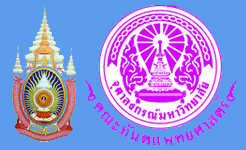
The
objective of this study was to investigate the effect of orthodontic force
on the histologic response of the pressure and the tension sides of the
alveolar bone at different periods of time. The sample consisted of 16 male
Wistar rats, aged 60 days. The left maxillary first molar of each animal
was retracted by a plastic module using the initial force of 40 grams, while
the right one was not retracted and used as a control. Two animals were
sacrificed randomly after each of the following periods: 1, 2, 4, 6, 8,
10, 12 and 14 days, respectively. The histologic response of the alveolar
bone was scrutinized from the serial sections of the alveolar bone distal
to mesio-buccal root of the left maxillary first molar cut in the mesio-distal
direction. One-Way ANOVA and multiple comparison of Scheffe' at the level
of 0.05 significance were used to compare average numbers of osteoclasts
and osteoblasts at different periods of time. The average numbers of both
types of cells at each period of time were compared between the experimental
and the control groups by using Student's t-test at the level of 0.05 significance.
The results showed that histologic changes of the periodontium subjected
to the orthodontic force could be divided into three phases: 1-2, 4-8 and
10-14 days after retraction. In the first phase, the periodontal space at
the pressure side was narrower than that of the control group. The alveolar
bone surface of this side was rough with higher numbers of osteoclasts.
The periodontal space of the tension side was wider than that of the control
group. Most of the alveolar bone surface at this side was smooth and covered
with osteoblasts. In the second phase, the periodontal space at the pressure
side was narrower than that of the first phase and the hyalinization was
observed in some tissue sections. The alveolar bone surface was resorbed
by osteoclsts especially at the root apex. At the tension side, the periodontal
space was wider than the previous phase and a large numbers of osteoblsts
lined along the alveolar bone surface. The cemental resorption was seen
in some tissue sections. In the third phase, histologic features of the
experimental group were similar to the control group. The periodontal space
at the pressure and the tension sides was as the same width. Osteoclasts
were hardly seen but ostoblasts were generally found. The cemental resorption
was shown in some tissue sections. The average numbers of osteoclasts and
osteoblasts of the experimental group at each period of time after retraction
were significantly higher than those of the control (p<0.05). They reached
a peak after 6 days of retraction (p<0.05), and gradually declined. It
was concluded that the maximum response of the alveolar bone to the orthodontic
force, as indicated by the number of bone cells, occurred after 6 days of
retraction.
วัตถุประสงค์ของการวิจัยครั้งนี้
เพื่อศึกษาผลของแรงทางทันตกรรมจัดฟันต่อการตอบสนองทาง จุลกายวิภาคศาสตร์ของกระดูกเบ้าฟันด้านกดและด้านตึงที่ระยะเวลาต่างกัน
กลุ่มตัวอย่างประกอบด้วยหนูวิสตาร์เพศผู้ที่มีอายุ 60 วัน จำนวน 16 ตัว ใช้พลาสติกโมดูลเคลื่อนฟันกรามบนซ้ายซี่แรกด้วยแรงเริ่มต้นขนาด
40 กรัม โดยใช้ฟันกรามบนขวาซี่แรกที่ไม่ได้ใส่เครื่องมือเคลื่อนฟันเป็นกลุ่มควบคุม
สุ่มฆ่าหนูครั้งละ 2 ตัวภายหลังได้รับแรงเคลื่อนฟันเป็นเวลา 1, 2, 4, 6, 8,
10, 12 และ 14 วัน ตามลำดับ ศึกษาการตอบสนองทางจุลกายวิภาคศาสตร์ของกระดูกเบ้าฟัน
จากแผ่นชิ้นเนื้อที่ตัดอย่างเรียงตามลำดับในแนวใกล้กลางไกลกลาง นับจำนวนเซลล์สลายกระดูก
และเซลล์สร้างกระดูกเบ้าฟันบริเวณด้านไกลกลางต่อรากฟันด้านแก้มใกล้กลางของฟันกรามบนซี่แรกในแต่ละช่วงเวลา
แล้วนำค่าเฉลี่ยจำนวนเซลล์ทั้งสองมาวิเคราะห์ความแปรปรวนทางเดียว เปรียบเทียบความแตกต่างระหว่างค่าเฉลี่ยจำนวนเซลล์ในแต่ละช่วงเวลาที่ศึกษา
ด้วยการเปรียบเทียบพหุคูณโดยวิธีของเชฟเฟ และเปรียบเทียบความแตกต่างระหว่างค่าเฉลี่ยจำนวนเซลล์ของกลุ่มทดลองและกลุ่มควบคุมด้วยสถิติวิเคราะห์ค่าที
ที่ระดับนัยสำคัญทางสถิติ 0.05 ผลการวิจัยพบว่าการเปลี่ยนแปลงทางจุลกายวิภาคศาสตร์ของอวัยวะปริทันต์ภายหลังได้รับแรงเคลื่อนฟัน
มีความแตกต่างกัน แบ่งได้เป็น 3 ช่วง คือ ช่วง 1-2, 4-8 และ 10-14 วันภายหลังได้รับแรงเคลื่อนฟัน
ช่วงแรก ด้านกด ช่องเอ็นยึดปริทันต์แคบลงเมื่อเปรียบเทียบกับกลุ่มควบคุม ผิวกระดูกเบ้าฟันเริ่มเป็นแอ่งไม่เรียบ
เริ่มพบเซลล์สลายกระดูกมากขึ้น ด้านตึง ช่องเอ็นยึดปริทันต์กว้างขึ้นเมื่อเทียบกับกลุ่มควบคุม
ผิวกระดูกเบ้าฟัน ส่วนใหญ่มีขอบเรียบ พบเซลล์สร้างกระดูกอยู่โดยทั่วไป ช่วงที่สอง
ด้านกด ช่องเอ็นยึดปริทันต์แคบลงมากเมื่อเทียบกับช่วงแรก ปรากฏบริเวณไฮยาลิไนเซชั่นในแผ่นชิ้นเนื้อบางแผ่น
เซลล์สลายกระดูกละลายผิวกระดูกเบ้าฟันโดยทั่วไป โดยเฉพาะบริเวณใกล้ปลายรากฟัน
ด้านตึง ช่องเอ็นยึดปริทันต์กว้างขึ้น มีเซลล์สร้างกระดูกกระจายตามผิวกระดูกเบ้าฟันเป็นจำนวนมากเมื่อเทียบกับช่วงแรก
พบมีการละลายของผิวเคลือบรากฟันในแผ่นชิ้นเนื้อบางแผ่น และช่วงที่สาม พบลักษณะทางจุลกายวิภาคศาสตร์คล้ายกลุ่มควบคุม
คือ ช่องเอ็นยึดปริทันต์ด้านกดและด้านตึงมีความกว้างใกล้เคียงกัน ที่ผิวกระดูกเบ้าฟันพบเซลล์สลายกระดูกได้น้อย
แต่ยังคงพบเซลล์สร้างกระดูกบุอยู่ทั่วไป พบการละลายของผิวเคลือบรากฟันเป็นแอ่งในแผ่นชิ้นเนื้อบางแผ่น
ค่าเฉลี่ยของจำนวนเซลล์สลายกระดูก และเซลล์สร้างกระดูกเบ้าฟันกลุ่มที่ได้รับแรงเคลื่อนฟัน
ในแต่ละช่วงเวลา มีค่ามากกว่าด้านที่ไม่ได้รับแรงอย่างมีนัยสำคัญทางสถิติ และมีค่าสูงที่สุดในวันที่
6 ภายหลังได้รับแรง ซึ่งต่างจากวันอื่นอย่างมีนัยสำคัญทางสถิติ ที่ระดับนัยสำคัญทางสถิติ
0.05 หลังจากนั้นค่าจะค่อย ๆ ลดลง สรุปได้ว่า การตอบสนองของกระดูกเบ้าฟันต่อแรงทางทันตกรรมจัดฟันเกิดขึ้นมากที่สุดภายหลังได้รับแรงเคลื่อนฟันวันที่
6